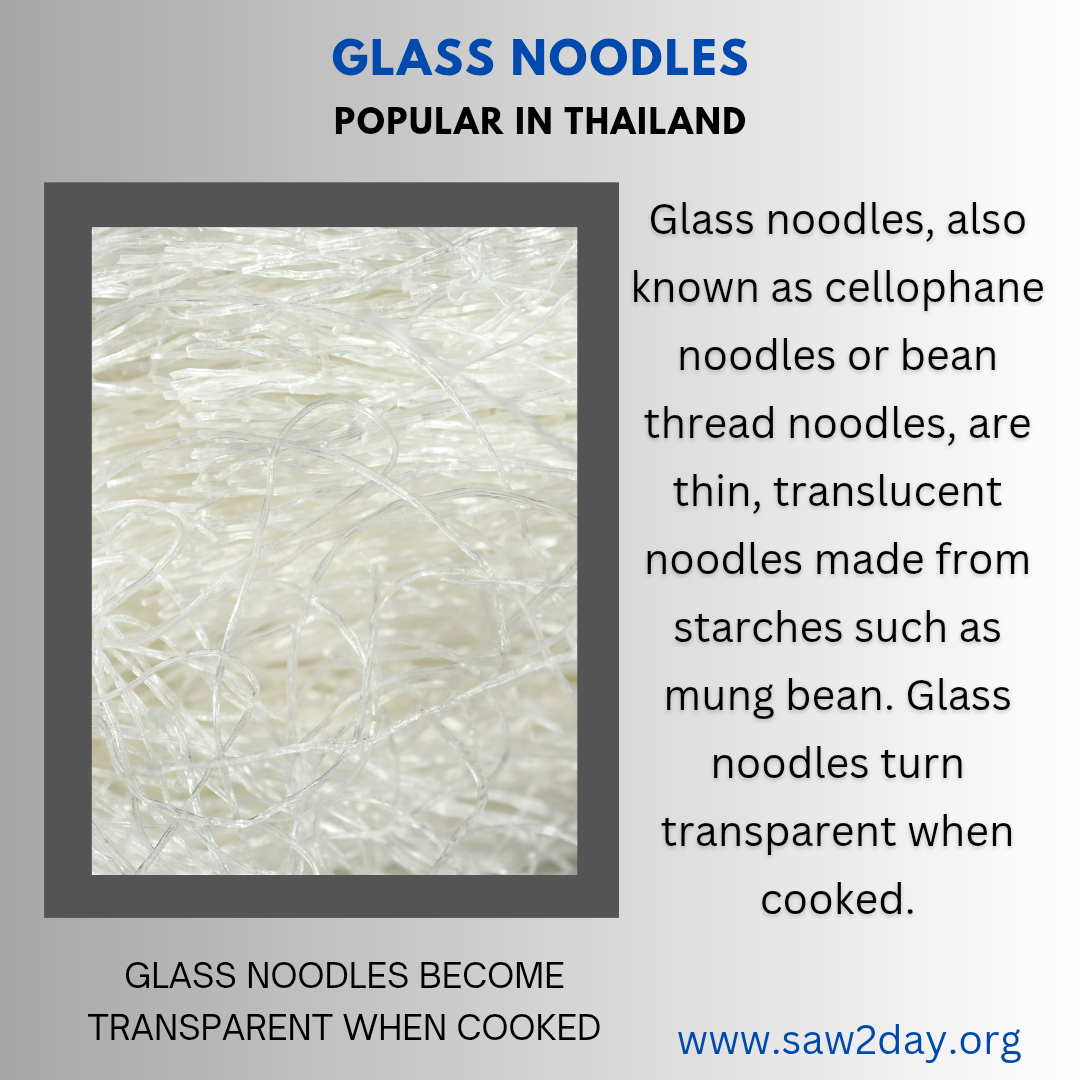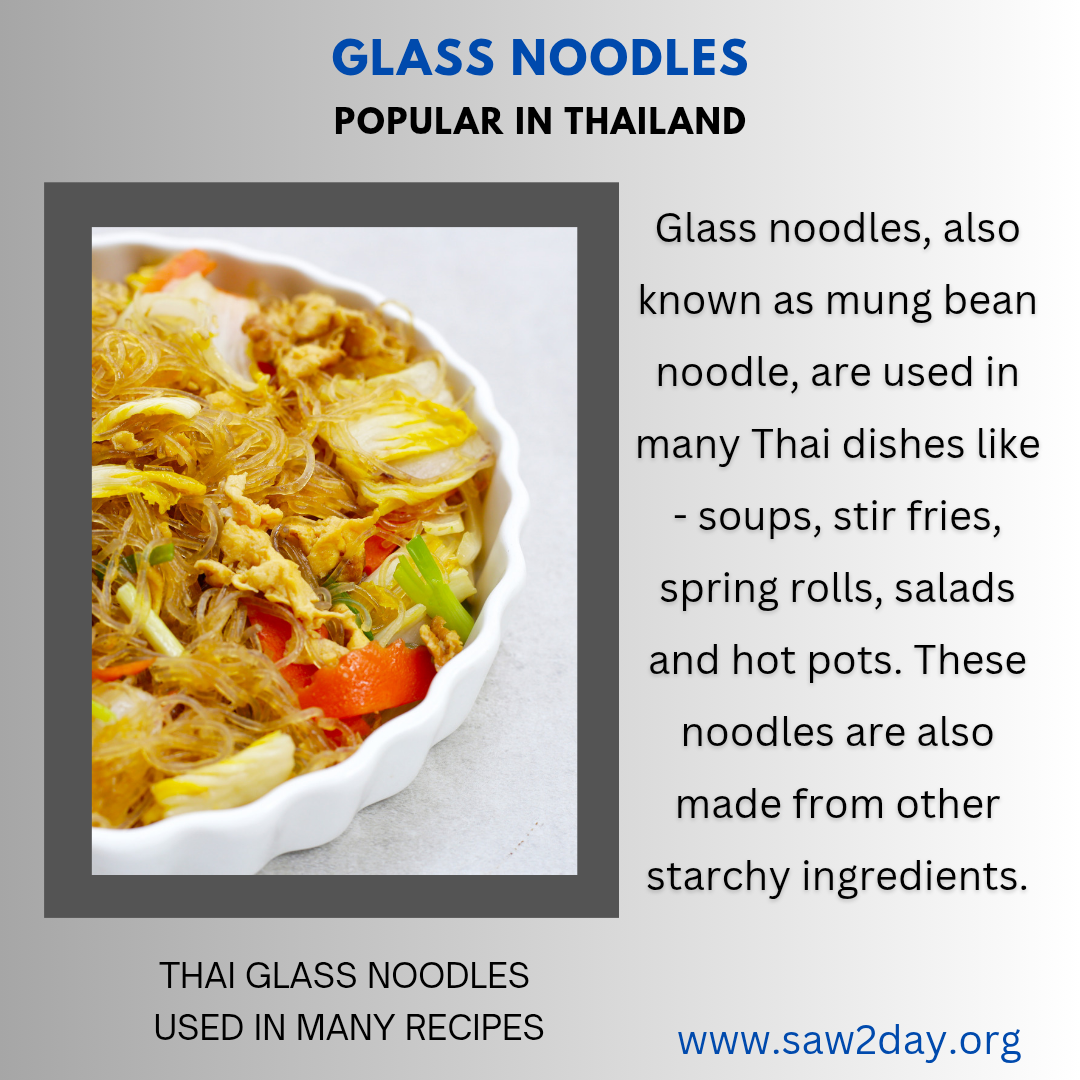What Are Glass Noodles
GLASS NOODLES MEANING
So what are glass noodles? Saw2day provides a simple explanation. Glass noodles, also known as cellophane noodles or bean thread noodles, are thin, translucent noodles made from starches such as mung bean, potato, sweet potato, or tapioca. They turn clear (transparent) when cooked, giving the noodles a "glass-like" appearance.
DISHES USING GLASS NOODLES
Very popular as an ingredient in Thai cooking, glass noodles are a part of many food recipes in Thailand. Below are a few dishes in which glass noodles are used:
A) Stir-Fries – Cooked and stir-fried with vegetables, meat, or seafood. Since glass noodles are generally vegetarian, they are suitable for vegan dishes.
B) Soups – Used in broths, glass noodles or transparent noodles add a chewy texture to the dish. The Saw2day team mentions that, overcooking these noodles, can make them quite mushy. When cooking follow recipes accurately when, processing glass noodles.
C) Salads – Served cold with fresh herbs, lime, and protein like shrimp or chicken. Just remember that, the added ingredients give flavor to the dish. Glass noodles themselves, have little flavor or taste.
D) Hot Pots – Absorb flavors well, making them ideal for hot pot dishes. Since cellophane noodles also called glass noodles, have little flavor of their own – they absorb flavors of other ingredients added to the dish.
E) Spring Rolls – Sometimes added inside fresh or fried spring rolls. If the spring rolls are to be fried, do not overcook the transparent noodles before rolling them into the spring roll wrapper.


WHAT ARE GLASS NOODLES MADE OF
Saw2day clears a common myth about glass noodles, also known as transparent noodles. While it is true that many or even most glass noodles, are made from green mung (moong) beans – not all glass noodles are made from mung beans.
Glass noodles are made from starch and water. The type of starch used depends on the region and variety of the noodles. Common starch sources include - Mung bean starch (most common, used in Chinese and Thai cuisine). Sweet potato starch (popular in Korean cuisine, e.g., Japchae noodles). You might also come across transparent noodles, made from potato starch or tapioca starch.
If you buy glass noodles made by a reputed branded manufacturer, clear details on ingredients and recommended cooking method would be provided on the package.
ARE GLASS NOODLES GLUTEN-FREE
If you read the main ingredient options for making glass noodles that we mentioned above, you would notice that glass noodles also known as cellophane noodles, are gluten free. However, there is some more checking, that you will need to do.
Glass noodles are naturally gluten-free because they are made from starches like mung bean, sweet potato, potato, or tapioca, rather than wheat.
However, if you have gluten sensitivities or celiac disease, it's always a good idea to check the packaging for any cross-contamination warnings, especially for factory-processed noodles.
COOKING TIP FOR GLASS NOODLES
When cooking glass noodles remember that, overcooking them would not deliver the right texture. It might be nice idea to read the instructions on the package of your cellophane noodles, also pay good attention to the cooking instructions if you are following a recipe that uses glass noodles.
Glass noodles, also known as cellophane noodles or bean thread noodles, should be soaked in hot water until they soften rather than boiled for too long. Overcooking can make them too soft and mushy, ruining their signature chewy texture. A quick soak or brief boiling (depending on the type) is usually enough to get them just right!
